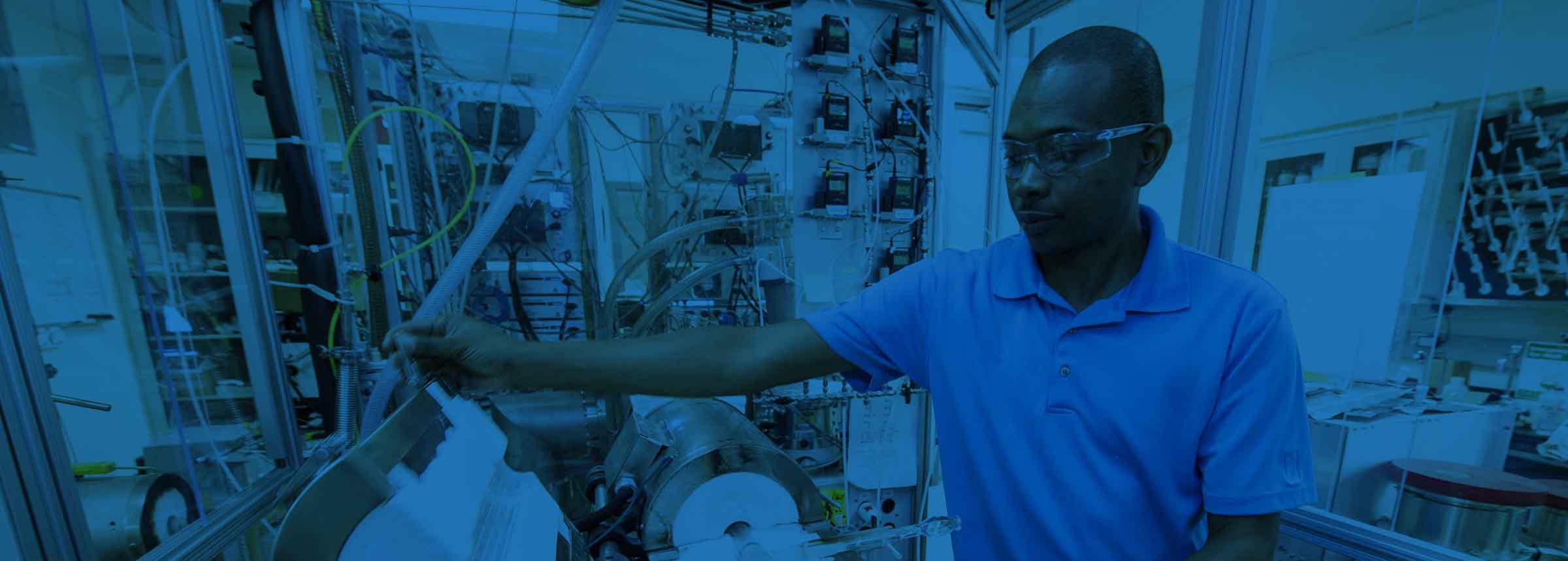Molecular Beam Mass Spectrometry

Evaluating catalytic performance in real-time under harsh operating conditions through continuous product sampling and analysis
Overview:
Molecular beam mass spectrometer (MBMS) systems developed at the National Renewable Energy Laboratory (NREL) provide analysis of harsh environments that are problematic for other techniques. These systems can be coupled to various reactors for pulsed (1-2 minutes per sample) or continuous product monitoring, and have been used for laboratory studies of a variety of ambient-pressure, high-temperature, reactive systems, including catalytic pyrolysis vapor upgrading, cracking and steam reforming of gasifier tars, analytical pyrolysis of biomass feedstocks and products for rapid screening of composition, and measurements of alkali metal release during biomass combustion, co-firing, and gasification. In the MBMS system, sampled gases/vapors are first extracted through a 300-μm critical-flow orifice and the resulting free-jet expansion causes an abrupt transition to collision-less flow that quenches chemical reactions and inhibits condensation. The analyte is thus preserved in its original state, allowing light gases to be sampled simultaneously with heavier condensable and reactive species. The resulting molecular beam is intercepted by low-energy electrons (<25 eV), and mass spectra are generated approximately once per second so that the time-resolved behavior of the system under study can be observed. Because the sample is introduced continuously by this technique, with proper calibration quantitative measurement of constituents can potentially be done once per second.
Additional Information:
NREL Molecular Beam Mass Spectrometry Fact Sheet
National Laboratory:
National Renewable Energy Laboratory